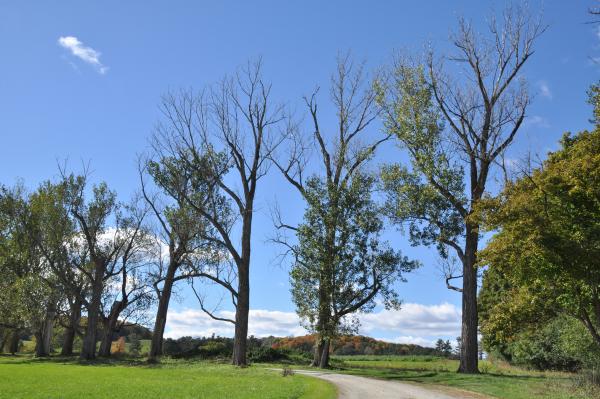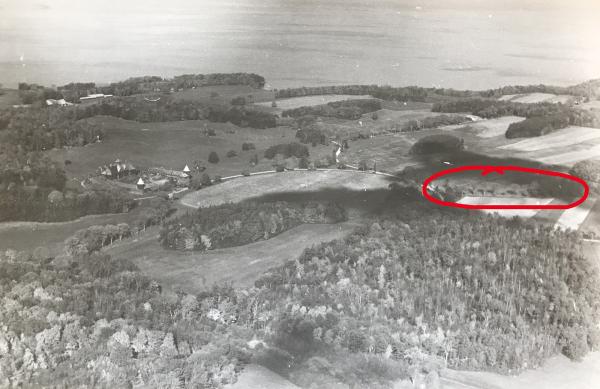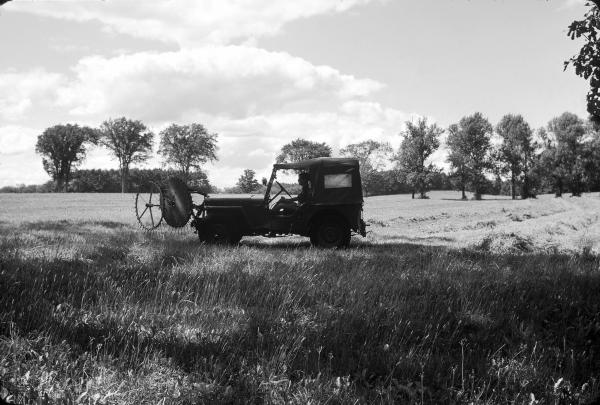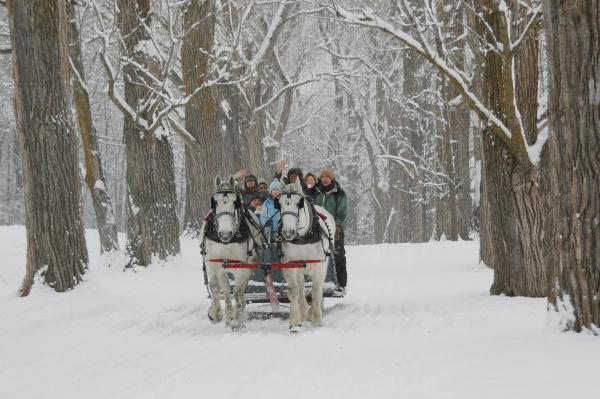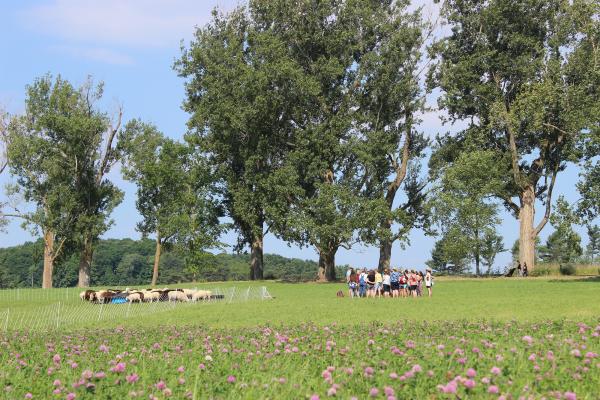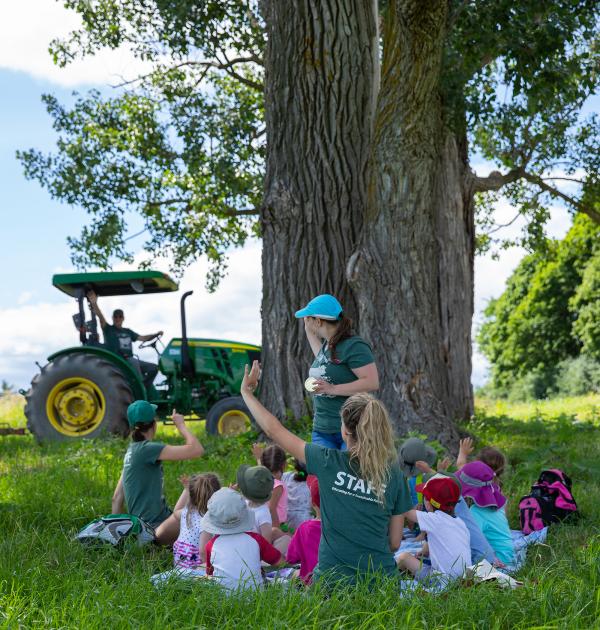I’ve been so curious about the history of these regal poplars. Thank you for sharing the photo archive, these majestic trees have enriched the landscape. I feel lucky to have enjoyed them.
Farewell to Poplar Drive
UPDATE:
We’re excited to share that much of the wood from the Eastern Cottonwoods of Poplar Drive will find a new purpose! After Treeworks of Vermont removes and chips the tops of the trees, Vermont Tree Goods will harvest the large trunks and trailer them to their lumberyard in Bristol, Vermont. Tree Goods handcrafts natural-edged wood furniture. This winter, they will saw the logs into thick, wide boards (slabs) and round cross-sections of the trunks (cookies), then make tables from this wood. Several of these tables will be used here at the Farm, as a way to honor and remember these trees and the natural cycle of life that we are all a part of. If you’d like your own table made from this wood, please contact Vermont Tree Goods. A local Shelburne artisan will also be turning a few chunks into bowls.
We’ve been moved by the outpouring of love for these old trees, and the memories they hold for you. For many, Shelburne Farms is a kind of home, a native landscape that people return to regularly year after year as their families grow. We love being a place where you can, in fact, watch a tree grow up and experience its life cycle. It's a unique role that protected farm and forests like ours can play in people's lives. We are honored to hold this place in trust for all of you who enjoy its fields, forests, pastures, and programs.
The work on Poplar Drive is scheduled to begin later in November.
ORIGINAL POST:
The enormous cottonwood trees along what is known as “Poplar Drive,” are aging, weak, and, increasingly, unsafe. This October, after the property closes for the season, the Farm is going to take them down.
Native Eastern Cottonwoods (Populus deltoides) are one of the largest North American hardwood trees, and one of the fastest growing. Because of these qualities, they’re commonly planted as shade trees in new recreational areas. Their wood, however, is largely useless – it’s too light, soft, and weak for most lumber applications. Eastern cottonwoods typically live 70 to 100 years.
Therein lies the problem. These Farm trees are beyond their normal lifespan. Many are already dead, and the remainder are in rapid decline. Because of their weak wood and enormous height, any dead branches can fall at any time. The trees have been pruned over the last decade to prolong the life of the allée, but it is now too far gone.
So we are taking action, knowing that the removal of the trees will be a big change for all of us who love the Farm.
The trees will be cut down soon, and new trees – the same genus and species – will be planted in their place, according to our Landscape Stewardship Plan. Over time, the shade canopy will be restored.
Curiously, for such a prominent feature of the Farm's landscape, these trees are of mysterious origin. Patricia O'Donnell of Heritage Landscapes, who developed the Farm's Landscape Plan, believes that given their size, these trees may predate the estate of Shelburne Farms (begun in 1886). She thinks they may have lined the entry drive to an earlier farm. On archival topographical and property maps of the area, however, the trees don't show up. And while there may be a record of them in our Archives, recent digging has yet to turn any up.
As we prepare to take down these trees, we honor their life and beauty, with a brief pictorial history of them on the Farm.
Comments
On a very early spring evening after my very first tour guide meeting 10 or 11 years ago, I took a walk down Poplar Drive. Thinking I heard a squirrel scrabbling around, I went to explore. There instead of a squirrel was a flow of sap from high in one of the poplars splashing down the side of the tree as if from a garden hose. I left after watching it for about 10 minutes. Amazing!
Ahh...It is inevitable. It is a shame that ALL of these trees will be removed.
Why not save a few of these grand elders, say every third or so, in the allee?
That way, visitors can appreciate their grandeur while watching the renewal of life.
Thanks for thinking to post these historical photos. It is sad to these precious trees go, but I look forward to watching their successors grow and populate future memories and photos.
Every fall and early spring I come to "Poplar Drive" and take in the overwhelming beauty and t grandeur of the cottonwood trees. It so saddens me to read that they are all coming down. Can you save a few of them, and plant the new ones in between the ones that may be able to be saved? None of us will be alive when the new ones reach their full height, so it would be so wonderful if some of them can be spared. A deep loss for sure!
I agree with the two wise ladies who suggest that you save some of them in the allee. Not all seem to have the same decay and damage you suggest.
It would seem that there are a few of those cotton woods you could spare while new ones grow. I stopped and had looked at each tree on my walk last Sunday. I and many will not be around to see the new ones grow to any height.
When my daughter, Abi and son, Sam where small my wife and I would pushed them in a carriage thru, what we have always referred to as, the tree tunnel. And over many years the tree tunnel, the rock beach, and many other places at the Farm have become anchors of some of our fondest memories...thank you to the staff and workers of SBF who continue to make this miracle possible!
You folks are so respectful of the wonderful estate you’ been given to manage sustain, and preserve. The use of the wood from those magestic, but dying trees is a tribute to mission of the property.
Why not create a second path in the field next to the trees and leave the original closed but view able. . We so less and less of these old trees in Vermont now....
I have one of the tables and benches in my backyard, made from previously storm-damaged trees from Shelburne Farms. It's a lovely idea to use the wood in this way.

